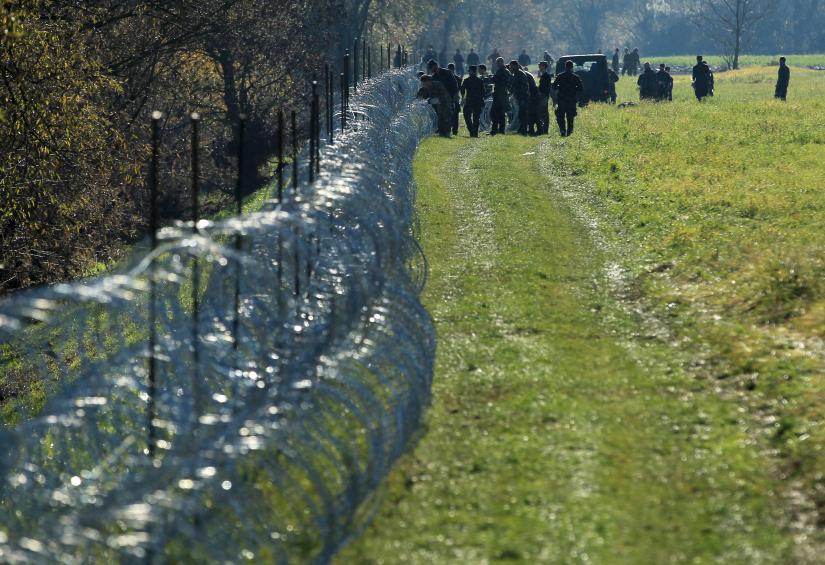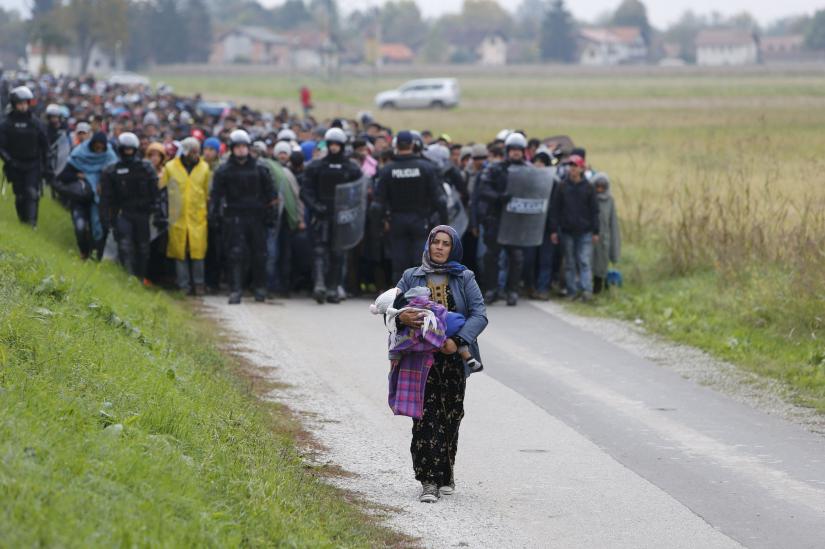 Slovenia has begun work on an additional stretch of fence along its southern border with Croatia with which it aims to keep out a rising number of migrants entering the country illegally.
Slovenia has begun work on an additional stretch of fence along its southern border with Croatia with which it aims to keep out a rising number of migrants entering the country illegally.
Slovenia's police registered 7,415 illegal migrants in the first seven months of this year, a jump of 56% compared to the same period of 2018 as more people are trying to reach wealthy Western states via the Balkans.
Last month the government signed a contract with a Serbian firm Legi-SGS to put up 40 kilometres (25 miles) of fence on the border with Croatia. Once that section is completed, the total length of fence will be 219 kilometres and cover almost a third of the Slovenian border with Croatia. Slovenia's total land and sea border is 1,370 km long.
"The fence will be erected temporarily in the areas where it is necessary to prevent illegal crossings of the state border and ensure the safety of people and their property," said Irena Likar, a spokeswoman of the Interior Ministry.
A Reuters photographer near the village of Preloka in southern Slovenia saw construction work underway at the site.
Likar said the exact time plan and location of for the erection of the fence would not be made public. Slovenia first began constructing a border fence during the refugee crisis of 2015 when in a period of six months about half a million illegal migrants passed through the country.
Slovenia first began constructing a border fence during the refugee crisis of 2015 when in a period of six months about half a million illegal migrants passed through the country.
This new stretch of fence is around 2.5 metres high and is being erected on the banks of the river Kolpa which runs between Slovenia and Croatia.
The government's immigration policy has met with little opposition in Slovenia, although some civil society groups are against the wire fence.
Most illegal migrants come from Pakistan, Algeria, Afghanistan, Morocco and Bangladesh. Only a fraction seek asylum in Slovenia, with most continuing on to neighbouring Italy and Austria.
Last month Italian and Slovenian police started joint border patrols in order to curb the flow of illegal migrants.
 International
International
41363 hour(s) 26 minute(s) ago ;
Morning 06:21 ; Sunday ; Jul 06, 2025
Slovenia erects more border fence to curb migrant inflow
Send
Reuters
Published : 17:45, Aug 22, 2019 | Updated : 17:47, Aug 22, 2019
Published : 17:45, Aug 22, 2019 | Updated : 17:47, Aug 22, 2019
0 ...0 ...
/hb/
Topics: Top Stories
- KOICA donates medical supplies to BSMMU
- 5 more flights to take back British nationals to London
- Covid19: Rajarbagh, Mohammadpur worst affected
- Momen joins UN solidarity song over COVID-19 combat
- Covid-19: OIC to hold special meeting
- WFP begins food distribution in Cox’s Bazar
- WFP begins food distribution in Cox’s Bazar
- 290 return home to Australia
- Third charter flight for US citizens to return home
- Dhaka proposes to postpone D8 Summit
Unauthorized use of news, image, information, etc published by Bangla Tribune is punishable by copyright law. Appropriate legal steps will be taken by the management against any person or body that infringes those laws.
Bangla Tribune is one of the most revered online newspapers in Bangladesh, due to its reputation of neutral coverage and incisive analysis.
F R Tower, 8/C Panthapath, Shukrabad, Dhaka-1207 | Phone: 58151324; 58151326, Fax: 58151329 | Mob: 01730794527, 01730794528


